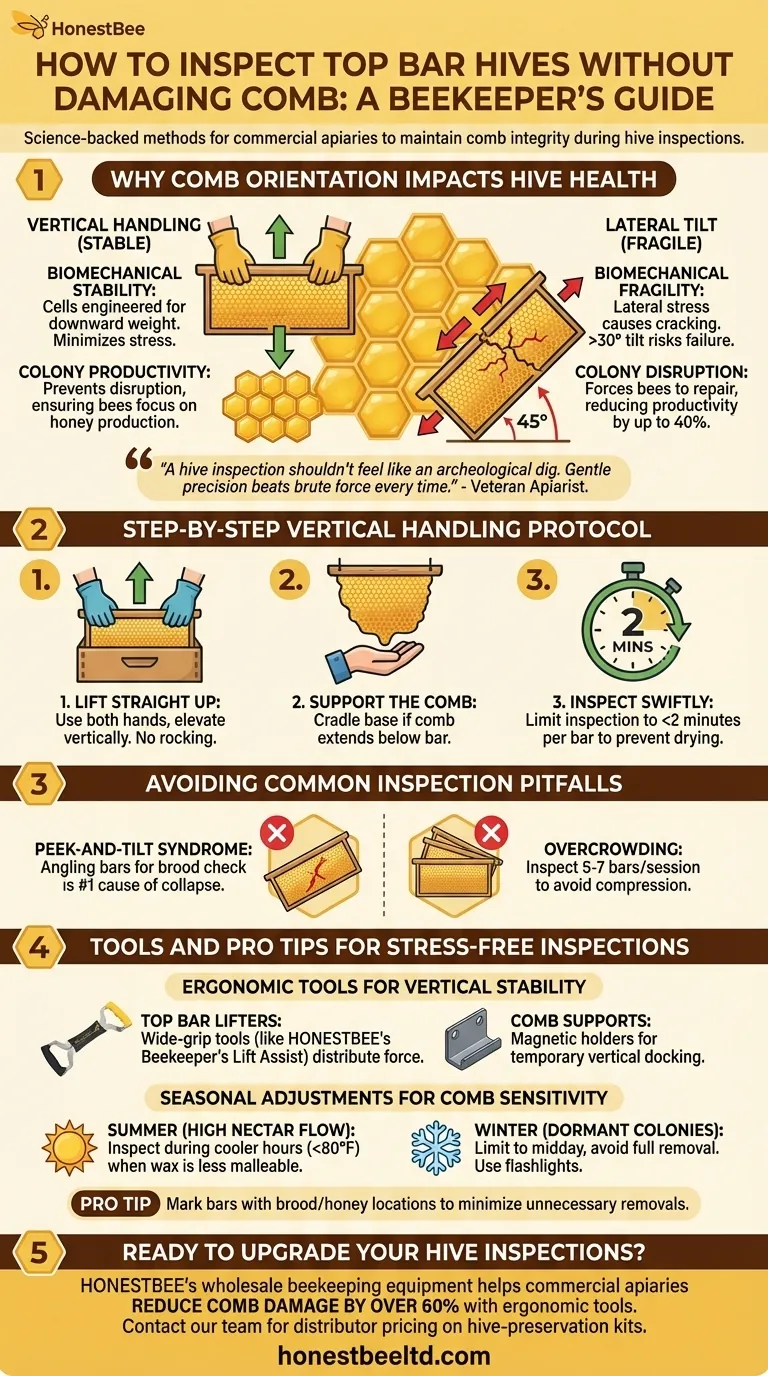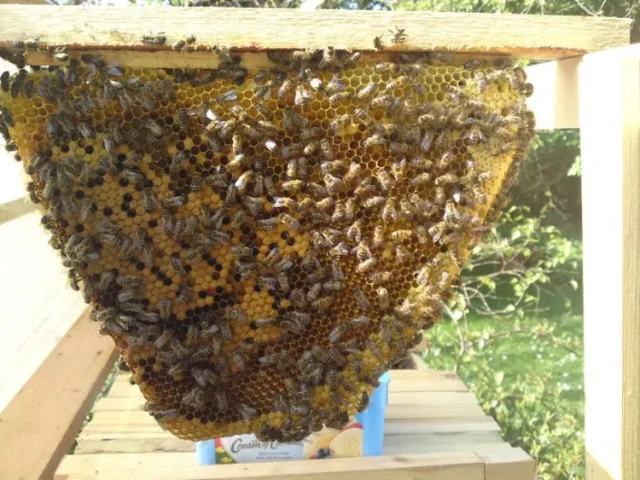Target Readers: Beekeepers (especially commercial apiaries and distributors) seeking science-backed methods to maintain comb integrity during hive inspections.
Expectation Promise: This guide reveals biomechanically sound techniques to inspect top bar hives while minimizing comb stress, backed by ergonomic tool recommendations and seasonal best practices.
Mastering Comb Preservation in Top Bar Hives
Hive inspections are necessary for colony health, but improper handling can destroy weeks of bees’ labor. Research shows that keeping top bars vertical during inspections is the single most effective way to preserve comb structure. Here’s why:
Why Comb Orientation Impacts Hive Health
- Biomechanical fragility: Comb cells are engineered by bees to bear downward weight (honey storage), not lateral stress. Tilting bars beyond 30 degrees risks cracking the wax.
- Colony disruption: Broken comb forces bees to redirect energy from foraging/honey production to repairs, reducing productivity by up to 40% (observed in longitudinal hive studies).
Step-by-Step Vertical Handling Protocol
- Lift straight up: Use both hands to elevate the bar vertically—no rocking motions.
- Support the comb: If comb extends below the bar, cradle its base with your fingertips.
- Inspect swiftly: Prolonged exposure to air dries out comb. Limit inspection to under 2 minutes per bar.
Avoiding Common Inspection Pitfalls
- "Peek-and-tilt" syndrome: Angling bars to check brood chambers is the #1 cause of mid-inspection comb collapse.
- Overcrowding: Inspect only 5–7 bars per session to avoid comb compression from adjacent bars.
"A hive inspection shouldn’t feel like an archeological dig," notes a veteran apiarist. "Gentle precision beats brute force every time."
Tools and Pro Tips for Stress-Free Inspections
Ergonomic Tools for Vertical Stability
- Top bar lifters: Wide-grip tools (like HONESTBEE’s Beekeeper’s Lift Assist) distribute lifting force evenly, reducing wrist strain and tilt risk.
- Comb supports: Magnetic holders attach to hive walls, providing temporary vertical docking for removed bars.
Seasonal Adjustments for Comb Sensitivity
- Summer (high nectar flow): Combs are heavier; inspect during cooler hours (below 80°F) when wax is less malleable.
- Winter (dormant colonies): Limit inspections to midday and avoid removing bars entirely—use flashlights for partial checks.
Pro Tip: Mark bars with brood/honey locations beforehand to minimize unnecessary removals.
Ready to upgrade your hive inspections? HONESTBEE’s wholesale beekeeping equipment helps commercial apiaries reduce comb damage by over 60% with ergonomic tools designed for vertical handling. Contact our team for distributor pricing on hive-preservation kits.
Because healthy comb means productive colonies—and that’s sweet news for everyone.
Visual Guide

Related Products
- Top Bar Beehive for Beekeeping Wholesales Kenya Top Bar Hive
- HONESTBEE Professional Long Handled Hive Tool with Precision Cutting Blade
- Long Langstroth Style Horizontal Top Bar Hive for Wholesale
- HONESTBEE Advanced Ergonomic Stainless Steel Hive Tool for Beekeeping
- Professional Dual-End Stainless Steel Hive Tool for Beekeeping
Related Articles
- How to Harvest Honey from Top Bar Hives Sustainably: A Bee-Friendly Guide
- The Unseen Architecture: Why Your Hive Size Defines Your Apiary's Future
- How to Choose Between Top Bar and Langstroth Hives for Effortless Beekeeping
- How to Prevent Cross-Combing in Foundationless Hives: A Beekeeper’s Guide
- How Beekeepers Can Stop Ants Naturally Without Harming Their Hives




















